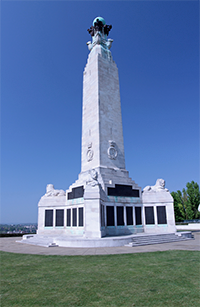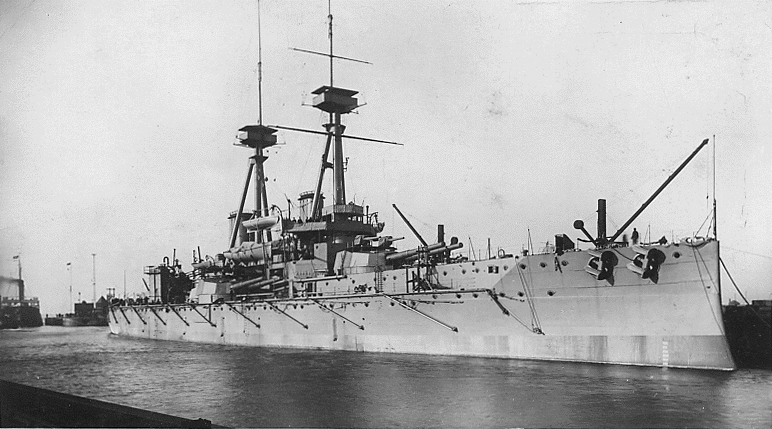First World War Project
Ernest Bolton ATKINS (of Newnham)
b. 6th September 1895 Leading Stoker, Service Number K/21358 |

Although Ernest's parents and grandparents came from Lenham, the Commonwealth War Graves Commission records him as the "son of William and Annie Atkins, of Ivy Cottage, Newnham, Sittingbourne, Kent." The Naval Record of "Deaths at Sea" gives his parents' address as Forge Farm, [38 The Street,] Newnham, Sittingbourne." The family home in the 1911 Census was Upper Tickham (probably a Wagoner in Tickham Farm), Lynsted Parish. William was one of seven children of William Atkins - who had married twice. His first wife, married in 1869, Sarah Ann E (née Smith) bore two children, William J and Martha A, before dying in 1889; his second wife, Annie (née Gibson) raised five more children - Edith Jane, Henry Aubrey, Ernest Bolton, Florence Beatrice and Walter Charles. Curiously, Annie with her daughter (Edith) was registered in the 1891 census as housekeeper to William Atkins. It may be possible that William adopted Annie's daughter as his own (Edith Jane)?
The limited Naval records available for Ernest Bolton Atkins confirm his date and place of birth and his occupation as farm labourer. He stood at 5 feet and 10 inches, had a chest measurement of 37 inches, brown hair, blue eyes and fresh complexion. It is likely that he joined the Royal Navy to escape life as an agricultural labourer well before the outbreak of war.
Military Experience
At the age of 18, Ernest signed up to the Royal Navy on 5th November 1913 for a 12-year period. Throughout his career, his character is measured as "very good". He went first to Pembroke II (Chatham) for training as a Second-Class Stoker until 31st March 1914. On 1st April 1914, Ernest was rated as Second-Class Stoker aboard HMS "Vanguard"; from 8th October 1914 he was rated "First Class Stoker". It wasn't until 8th April 1917 that Ernest was rated as "Leading Stoker," which ranking he held until his ship sank after an internal explosion on 9th July 1917. Scapa Flow (Orkney) provides one of the largest natural harbours in the world and is surrounded by islands and shallows that were protected by strategically sunk ships.
The strategic importance of this anchorage was made clear as it placed Britain in a strong position from which to intercept German ships. This proved critically important during the Battle of Jutland, 1916, when the German fleet was met on the open seas by Admiral Jellicoe's forces. Even though Britain lost more ships (25) than Germany, the German Fleet did not take the risk of leaving their Baltic base heading for the north Sea for the remainder of the war. However, the German navy switched to increasing use of U-boats.
The story of Ernest is the story of HMS "Vanguard". Unfortunately, the official records for the Loss of HMS Vanguard have not been digitised (ADM 137/3681 - The National Archives, Kew Public Records Office). I am grateful to find a transcription of the key Enquiry Report through "The Great War Primary Documents Archive". The conclusion was that there was no obvious cause for the explosion. The Court of Enquiry, held on HMS "Emperor of India" on 30th July 1917 explored numerous potential causes but ultimately concluded:
"30. Our final conclusions are summed up as follows, viz.-
We consider that the loss of the "VANGUARD" may have been due to
(i) The ignition of cordite, due to an avoidable cause; or
(ii) abnormal deterioration of a charge of cordite due to that charge having, undetected, been subjected to abnormal treatment during its life. And further, in the absence of investigation, we should not be right in omitting:-
(iii) The act of an enemy agent, probably without the ship; and
(iv) The ignition of some cordite due to its becoming unstable.
31. In conclusion, we would state that we are unable to attribute blame to any person in connection with the loss of His Majesty's Ship "VANGUARD"."
Before the catastrophe that day, in the morning, the ship was at anchor off the North Shore of Scapa Flow before being exercised at "Abandon Ship". At 5 o'clock that afternoon the "Vanguard" left the North Shore and proceeded, at about 12 knots, to her berth in the Fleet anchorage, exercising paravanes [towed underwater minesweeping devices] on the way and anchoring at 6.30 p.m. About 11.20 p.m., HMS Vanguard was utterly destroyed by internal explosions.
Medal Records shows that Ernest Bolton Atkins was posthumously awarded the British War and Victory Medals. [See Appendix 1]
Military Experience of Ernest Bolton Atkins

There are echoes of the fate suffered by HMS "Princess Irene" (Arthur Harold Hughes of Lynsted Parish, killed in the explosion) and HMS "Bulwark" (implicated in the premature death of Samuel Albert Underdown of Luddenham who suffered shock and mortal decline from attending the scenes of both catastrophes).
The strategic position of Scapa Flow (Orkneys) was well understood before the war and became the home of the "Grand Fleet" throughout the war. After the Battle of Jutland, the German navy in 1917 would not challenge the Grand Fleet nor could it easily navigate the Straits of Dover to reach the High Seas from its own Western seaboard. Scapa Flow's isolation from the British mainland meant that the "Grand Fleet" was unable to meet or prevent German cruiser "tip and run" attacks on the East coast of Britain. Although dramatic, the loss of life and damage was relatively modest. The strategic importance of concentrated Naval forces at Orkney held sway throughout the war, resisting the temptation to be diluted in defence of occasional bombardment of the British coast.
Much of Ernest's experience would have been governed by spells of patrolling interspersed with maintenance, gunnery and torpedo practice, training and footballing challenges to keep them fit and maintain morale. Officers enjoyed the introduction of a golf-course (having imported turfs). There were opportunities to buy novels, games and luxury foods from the "Borodino". Theatre performances to 600 men took place aboard the "Gourko" in its hold. Yet more specialised ships populated "Gutter Sound at Longhope - colliers, oilers, ammunition ships and other auxiliaries. Later, submarines were added to their strength as were aircraft.
The scale and geography of Scapa Flow made the base flexible and durable. Some older steam vessels were deliberately sunk in some of the shallower approaches to prevent submarine or other sorties. Mines were laid and submarine nets hung across the entrances. Batteries of 12- and 18-pounder field guns were scattered strategically ashore. Destroyers were continuously cruising farther afield, the Duty Division would lie at one of the southern entrances (Longhope) at five minutes' notice. From time to time, a complete battle-squadron would go to sea to practice heavy firing in the western entrance of the Pentland Firth.
The winter months were harrowing, cold, windswept and dark.


 World War 1 Pages
World War 1 Pages